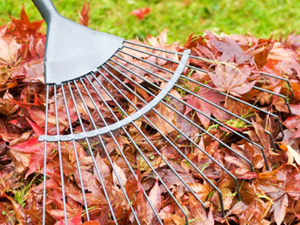 Rake and compost large leaves from oak and maple trees. Smaller leaves from ash, honey locust, and birch trees may be chopped with a mulching mower when dry and left on your lawn.
Rake and compost large leaves from oak and maple trees. Smaller leaves from ash, honey locust, and birch trees may be chopped with a mulching mower when dry and left on your lawn.
Spread clean straw, marsh hay or oak leaves over tender perennials, newly planted bulbs and strawberries before temperatures drop into the teens but after the soil surface has frozen.
Remove frozen plants from containers and hanging baskets and replace them with evergreen boughs, branches with colorful berries and interesting seed heads from perennials and ornamental grasses.
Keep mowing your lawn as long as the grass is growing. Meadow voles and field mice will damage turf and nearby trees and shrubs if they have long grass for food and cover.
Force tulip bulbs by planting them so they are barely covered with the “noses” poking out in shallow pots. Water well, cover with plastic and move to your refrigerator or an unheated, insulated garage that stays cool but does not drop below 35 degrees F. After about 12 weeks the pots may be moved into a cool area indoors and flowers will appear in 2 -3 weeks.
Change the oil, sharpen blades, clean air filters and replace spark plugs on all of your gas powered equipment. You will have a head start on many spring projects if all of your equipment is ready to go.
Many garden centers and florists will have Amaryllis bulbs for sale and often they are already planted in a pot and all you need to do is add water. Amaryllis are long lived plants that can be grown as blooming house plants during the winter and as foliage plant outdoors during the summer with a 8 week rest period in your basement during the fall.
